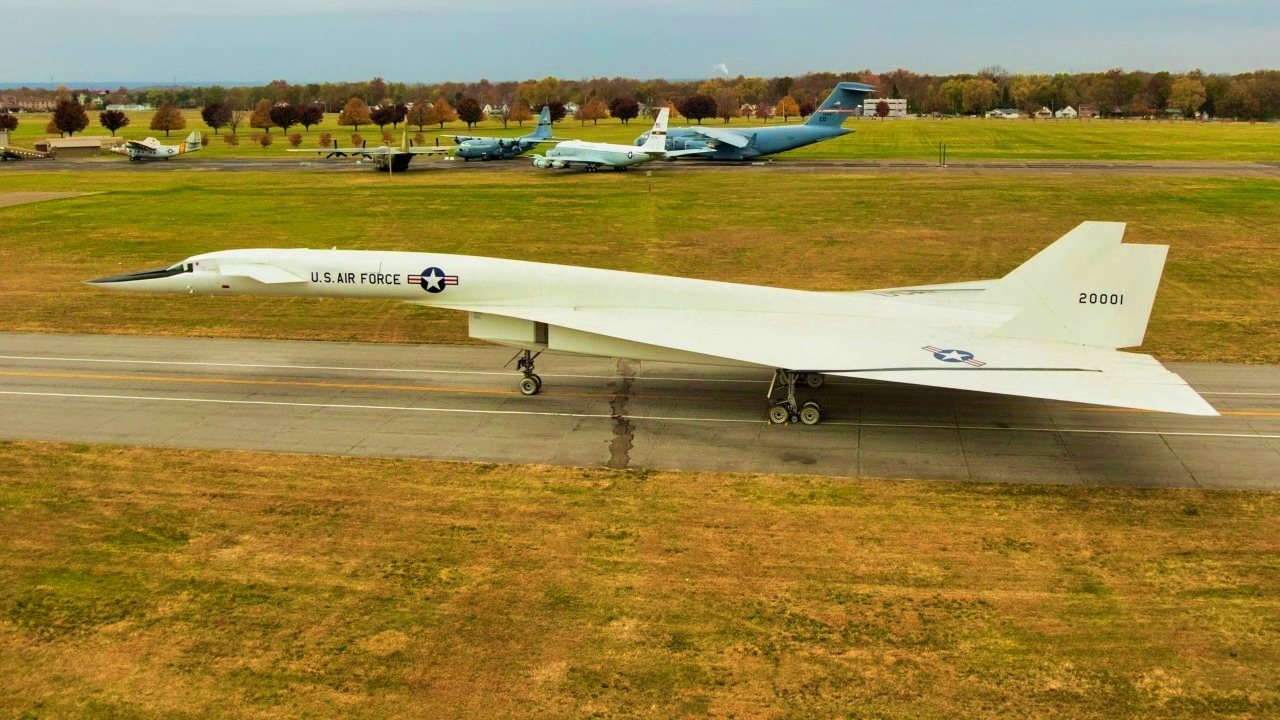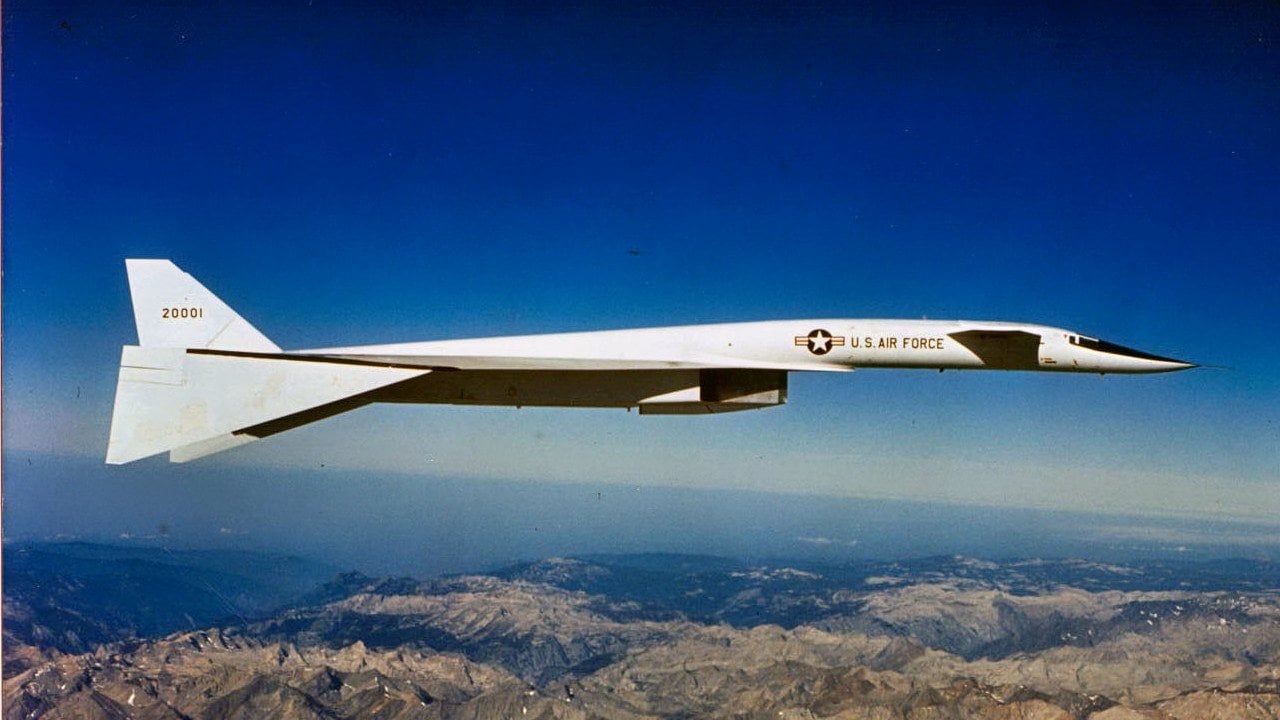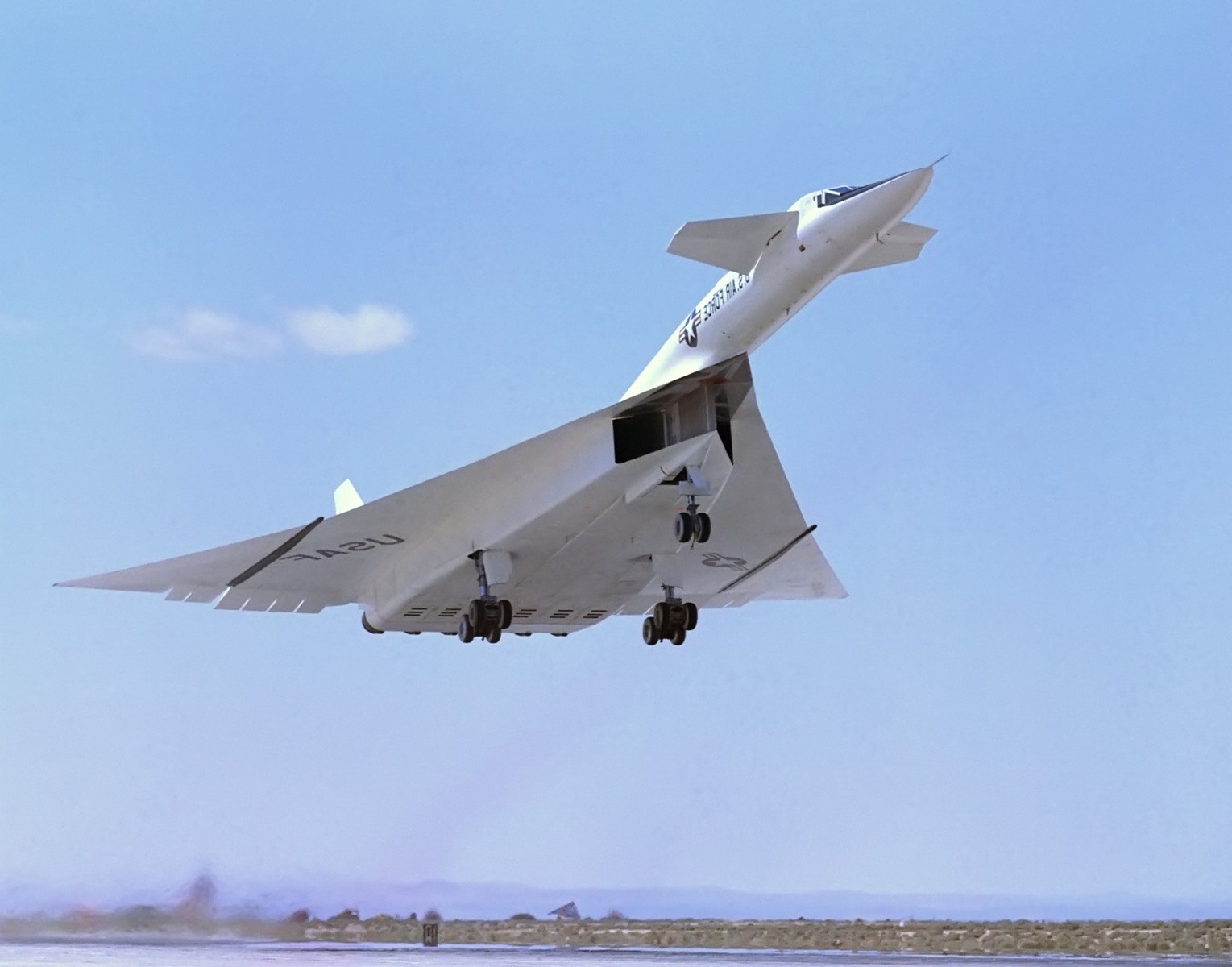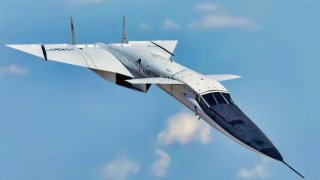XB-70 Valkyrie: The Air Force Built a Mach 3 Bomber That Was Obsolete
The North American XB-70 Valkyrie epitomized Cold War aerospace innovation. Designed to replace the B-52, the Valkyrie boasted speeds exceeding Mach 3 and an altitude ceiling of 70,000 feet, making it seemingly invincible to Soviet defenses.
What You Need to Know: The North American XB-70 Valkyrie epitomized Cold War aerospace innovation. Designed to replace the B-52, the Valkyrie boasted speeds exceeding Mach 3 and an altitude ceiling of 70,000 feet, making it seemingly invincible to Soviet defenses.

-Featuring six General Electric engines and an advanced delta-wing design, the XB-70 was an engineering marvel. However, the advent of surface-to-air missiles and intercontinental ballistic missiles rendered the XB-70 obsolete. Its legacy includes a dramatic mid-air collision with an F-104 in 1966, leading to the destruction of one prototype.
-The sole remaining XB-70 was retired in 1969, solidifying its legendary status in aviation history.
XB-70 Valkyrie, Explained
The Cold War was a romantic time for aerospace design. Nations were experimenting widely, investing heavily in novel ideas, pushing the boundaries of what was possible, of what an airplane could do. Of course, the motives behind that push, that romantic period, were decidedly un-romantic.
The jets were designed, ultimately, as vessels of death and destruction, invested in the paranoia of ideological conquest to the detriment of more beneficial aims. But when considered in a vacuum, simply from the perspective of aerospace design, the Cold War was a thrilling multi-decade peak for engineering imagination, ingenuity, and delivery.
Exemplifying the period was the North American XB-70 Valkyrie, a supersonic bomber with impressive specifications and a cult-like place in the annals of aviation history.
Introducing the XB-70
Designed in the early 1960s to replace the B-52 Stratofortress, which still serves in the U.S. Air Force today, the XB-70 was retired in 1969. Only two prototypes were ever built. The new bomber never replaced the B-52.

But the XB-70 was an impressive machine.
Capable of achieving Mach three-plus speeds and a 70,000-foot ceiling, the XB-70 featured six engines. The thinking behind the design was that at such speeds and altitudes, the XB-70 would be impervious to enemy aircraft, which in the late 1950s, were the Soviet Union’s only deployable defensive measure.
Additionally, the XB-70 moved so quickly that it was difficult for enemy radar to pick up. But before the end of the 50s, the Soviets had deployed their first surface-to-air missile, which put the invincibility of the XB-70 in doubt.

The XB-70s design featured a delta wing and canards. The body was built from stainless steel and titanium. The six engines were General Electric YJ93-GE-3 turbojet, which ran on JP-6 jet fuel. Each engine produced 28,000 pounds of thrust with the afterburners engaged and 19,900 pounds of thrust without the afterburner.
Then of course, the United States rolled out their first ever intercontinental ballistic missile, which pushed the XB-70 towards obsolescence and eventually compelled her retirement. She was a beautiful machine, however, achieving a top speed of 2,020 miles per hour or Mach 3.08; a sustained Mach three for thirty-two minutes; and a highest altitude of 74,000 feet.
Fire In the Sky
During an unauthorized photo shoot in 1966, one of the XB-70 prototypes was involved in a stunning mid-air collision. While flying in formation with an F-4, F-5, T-38, and F-104, the XB-70 was destroyed after colliding with the F-104. Remarkably, the incident is photographed, and you can see the moments directly before and directly after the F-104 collided with the XB-70.
The F-104 sheared off the XB-70s vertical stabilizer and damaged its wing; the F-104 exploded brilliantly. The XB-70 was able to maintain stable flight, but only briefly, before entering into an unrecoverable spin. The XB-70 co-pilot was killed. The pilot survived but was severely injured during ejection. Unlike fighter jets, which rely upon an ejection seat, the XB-70 featured an escape capsule, the door of which crushed the pilot’s arm while closing.
The lone surviving XB-70 would be retired for good just three years later, in 1969.
About the Author: Harrison Kass
Harrison Kass is a defense and national security writer with over 1,000 total pieces on issues involving global affairs. An attorney, pilot, guitarist, and minor pro hockey player, Harrison joined the US Air Force as a Pilot Trainee but was medically discharged. Harrison holds a BA from Lake Forest College, a JD from the University of Oregon, and an MA from New York University. Harrison listens to Dokken.
Image Credit: Creative Commons and/or Shutterstock.


